Review - (2023) Volume 11, Issue 4
Regeneration Battery
Duong Van Sinh*Received: May 31, 2023, Manuscript No. ijcsma-23-100732; Editor assigned: Jun 01, 2023, Pre QC No. ijcsma-23-100732 (PQ); Reviewed: Jun 11, 2023, QC No. ijcsma-23-100732 (Q); Revised: Jun 17, 2023, Manuscript No. ijcsma-23-100732 (R); Published: Jun 23, 2023, DOI: 10.5281/zenodo.8086037
Abstract
Battery Regeneration Technology, a breakthrough innovation in the field of sustainable energy storage, offers a solution to revitalize and reuse depleted batteries. This technology presents a safe and environmentally friendly approach to restore the functionality of old batteries without the need for disassembly or the addition of chemicals. By connecting the batteries to the regeneration equipment, they undergo a rejuvenation process, resulting in batteries that perform like new. This research paper explores the benefits, challenges, and future directions of battery regeneration technology. It discusses the positive impact of this technology on the environment, including pollution reduction, resource conservation, and mitigation of greenhouse gas emissions. Moreover, it addresses the challenges faced during the research, such as limited access to old batteries and the need for greater environmental awareness and government support. Moreover, the proposed research highlights the potential of battery regeneration technology to revolutionize various sectors. With ongoing research and development, advancements in efficiency, integration with smart charging technologies, and material recycling capabilities can be achieved. This technology holds the promise of a sustainable future, where battery waste is minimized, valuable resources are conserved, and environmental impact is significantly reduced. The paper also discusses the scientific principles behind the regeneration process, successful case studies, and future prospects of this innovative technology.
https://1xbetx.fun https://bahiscom.fun https://casibomagiris.com https://cratosslot.fun https://grandpashabet.fun https://holiganbet.fun https://holiganbet-giris.info https://jojobet.fun https://jojobetgiris.xyz https://kralbet.fun https://meritking.fun https://vdcasino.fun https://onwin.direct https://cypocafe.com https://sahabetgiris.fun
Keywords
Battery regeneration technology; Sustainability; Battery renew; Environmental impact; Resource conservation
Introduction
The increasing demand for energy storage solutions, coupled with the growing concern over environmental sustainability, has fueled the need for innovative technologies in the field of battery regeneration. Battery regeneration technology offers a compelling solution to address the challenges associated with the disposal of old and depleted batteries, providing a sustainable approach to extend their lifespan and reduce waste.
This research paper aims to explore the concept, benefits, challenges, and future directions of battery regeneration technology. The proposed research may gain significant attention in the energy industry for its potential to revolutionize the way batteries are managed and utilized. By rejuvenating and restoring the performance of old batteries, battery regeneration technology offers a cost-effective and environmentally friendly alternative to traditional battery disposal methods.
The paper begins by providing an overview of battery regeneration technology, including its principles and operational mechanism. It delves into the key components and processes involved in the regeneration process, highlighting the safe and efficient nature of this technology. Furthermore, it emphasizes the importance of resource conservation and waste reduction in the context of battery regeneration.
Next, the paper discusses the benefits of battery regeneration technology in various sectors. It explores its applications in industries such as automotive, telecommunications, renewable energy systems, military, and civilian sectors. Case studies and real-world examples are presented to demonstrate the positive impact of battery regeneration technology in improving battery performance, reducing costs, and minimizing environmental footprint.
However, the paper also acknowledges the challenges and limitations associated with battery regeneration technology. It addresses issues such as limited access to old batteries, the need for greater environmental awareness and support from governmental bodies, and the continuous improvement of regeneration processes and equipment. These challenges highlight the areas where further research and development are necessary to maximize the potential of this technology.
Finally, the paper concludes by outlining the future directions and possibilities for battery regeneration technology. It discusses potential advancements in efficiency, integration with smart charging technologies, and the development of new materials and recycling methods. The transformative potential of battery regeneration technology in creating a sustainable and resource-efficient future is emphasized.
In summary, this research paper provides a comprehensive introduction to battery regeneration technology, highlighting its significance, benefits, challenges, and future prospects. It serves as a foundation for further exploration and investigation into this emerging field, with the ultimate goal of fostering a more sustainable and environmentally conscious approach to energy storage and battery management.
Literature Review
The literature review focuses on the existing studies and advancements in battery regeneration technology. Several researchers have investigated various aspects of battery regeneration and its potential benefits for environmental sustainability and cost-effectiveness. One important area of research in battery regeneration is the development of innovative techniques and methodologies. Utilizable power increases in in the range of 20%-50 % if electrochemical state algorithms are added to the already existing Li-ion technology thereby leading in cost-effectiveness and less weight [1].
The author in pulse charge current variables including frequency and duty cycle, it was revealed that the duty cycle had the greatest impact on LiPo battery cycle life and could boost it by 100 cycles [2]. Explored the use of pulse charging and discharging methods to enhance the regeneration process and improve battery performance. Their study demonstrated promising results in terms of increased battery capacity and extended lifespan [3]. Another aspect of battery regeneration research is the evaluation of its environmental impact. Conducted a life cycle assessment to compare the environmental footprint of regenerated batteries with that of new batteries. The results indicated significant reductions in greenhouse gas emissions and resource depletion, emphasizing the environmental benefits of battery regeneration [4].
Furthermore, researchers have focused on the economic feasibility of battery regeneration and conducted a cost analysis and concluded that battery regeneration offers substantial cost savings compared to the purchase of new batteries. Their findings suggest that widespread adoption of this technology can contribute to cost-effective battery management strategies [5]. In addition, several studies have investigated the potential applications of battery regeneration in different industries. Explored the use of regenerated batteries in the renewable energy sector, particularly for energy storage systems. Their research highlighted the role of battery regeneration in improving the overall efficiency and sustainability of renewable energy systems [6].
Overall, the literature reveals a growing interest in battery regeneration as a sustainable and cost-effective solution for managing battery waste and extending their lifespan. The existing research provides valuable insights into the technical advancements, environmental benefits, economic considerations, and potential applications of battery regeneration technology. However, despite these positive findings, there are still research gaps that need to be addressed. For instance, further investigations are needed to optimize the regeneration process, enhance the quality and reliability of regenerated batteries, and explore the long-term performance and durability of regenerated batteries under various operating conditions.
In conclusion, the literature review underscores the significance of battery regeneration technology in promoting environmental sustainability, cost-effectiveness, and resource conservation. It establishes a foundation for current research, highlighting the need to address research gaps and explore the full potential of battery regeneration in various industries and applications. Desolations have many approaches. The most common and ideal procedure is ion exchange in the acid electrolyte to generate electric current [7, 8].
Methodology
The methodology section of a research paper outlines the systematic approach and techniques used to collect and analyze data. In the proposed research on battery regeneration technology, the following methodology can be adopted:
Battery Regeneration Technology
Principles of Battery Regeneration
Battery regeneration involves the restoration of battery performance by reversing the accumulation of sulfation and other common battery issues. The process utilizes specialized equipment and techniques to remove sulfates, rejuvenate cell capacity, and optimize battery efficiency
Benefits of Battery Regeneration
Environmental Sustainability: Battery regeneration reduces the volume of battery waste, minimizing the negative impact on the environment. It promotes circular economy principles by extending battery life and reducing the need for frequent replacements.
Cost Savings and Energy Efficiency
Regenerating batteries significantly reduces the cost associated with purchasing new batteries. This technology offers a cost-effective alternative for industries heavily reliant on lead-acid batteries, such as automotive, telecommunications, and renewable energy sectors. Regenerated batteries exhibit improved energy efficiency, enabling better utilization of stored energy and reduced energy consumption in various applications. Resource Conservation: By extending battery life, regeneration technology conserves valuable raw materials used in battery manufacturing, contributing to resource sustainability.
Working of Lead acid battery

A battery is an electrochemical device that converts stored chemical energy into electrical energy through a series of chemical reactions. It consists of one or more electrochemical cells connected in a series or parallel configuration. Each cell comprises two electrodes, namely the cathode (positive electrode) and the anode (negative electrode), separated by an electrolyte solution. Lead-acid batteries last long if the chemical reaction equation can complete as represented in Eq. 1 [8].
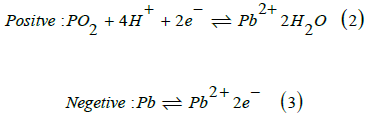
During the charging process, the active materials of the battery facilitate the conversion of lead sulfate back to its original form.

During the discharge process, a chemical reaction occurs within the battery, causing the anode to release electrons and the cathode to accept them. This creates an electrical current that can be utilized to power various devices. Simultaneously, the electrolyte facilitates the movement of ions between the electrodes to maintain charge balance.
As the battery discharges, the active materials within the electrodes undergo chemical transformations, leading to a reduction in the available energy and capacity. Over time, various. Factors, such as repeated charging and discharging cycles, operating conditions, and internal chemical reactions, can contribute to the degradation of the battery's performance.
Results and Discussion
Applications and Case Studies
Automotive Industry
Battery regeneration technology has gained traction in the automotive industry, where lead-acid batteries are extensively used. Several automobile manufacturers and service centers have adopted this technology to enhance battery performance, reduce costs, and minimize environmental impact.
• Case Study: CHS Battery Rental Services:CHS Battery Rental Services specializes in providing rental batteries for electric vehicles, golf carts, and other electric-powered transportation. By utilizing battery regeneration technology, they are able to rejuvenate and maintain their rental batteries in optimal condition, ensuring maximum efficiency and longer battery life for their customers. This allows them to offer reliable and cost-effective battery rental services to various industries, including tourism, transportation, and recreational activities as shown in Figure 1.
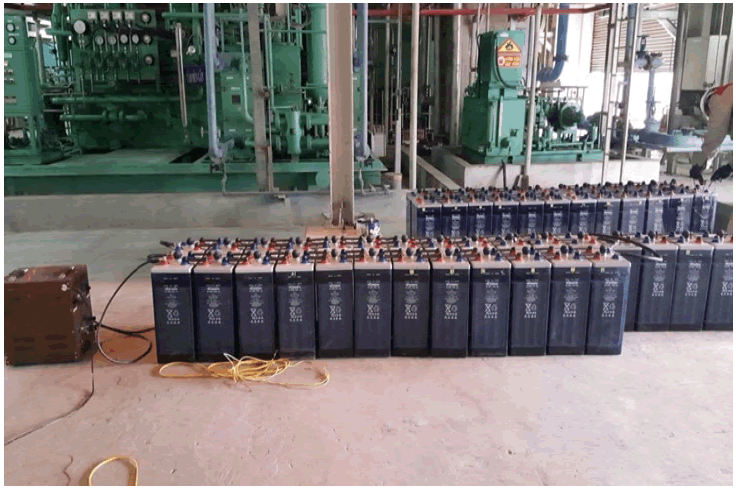
Figure 1: Application in Battery Rental Services.
Telecommunications Sector
In the telecommunications sector, battery backup systems are crucial for uninterrupted power supply. Regenerating batteries in telecom base stations and data centers has proven to be an effective strategy for optimizing battery performance and reducing operational expenses.
• Case Study 1: Viettel Telecom: Viettel Telecom operates a vast network of telecommunication towers and data centers. By implementing battery regeneration technology, they have significantly improved the lifespan and efficiency of their backup batteries. This has enabled them to reduce the frequency of battery replacements, minimize downtime during power outages, and deliver uninterrupted services to their customers. Figure 2 and Figure 3 show the high frequency pulse and high frequency pulse in scale.
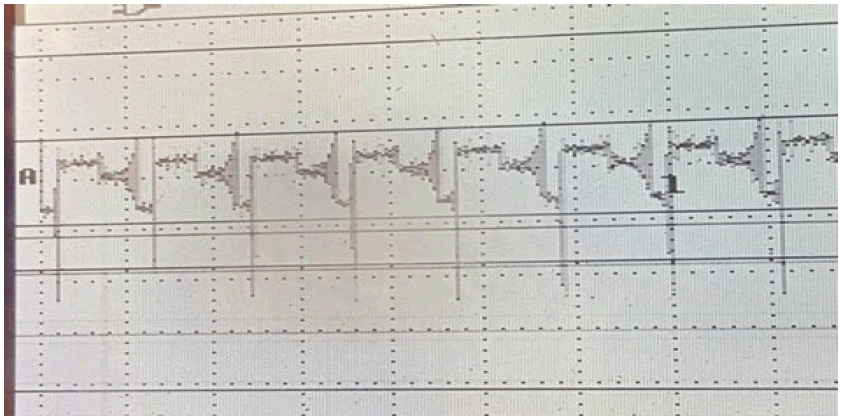
Figure 2: High Frequency Pulse.

Figure 3: High Frequency Pulse in Scale.
• Case Study 2: FPT Data Center: FPT Data Center, a leading provider of data center solutions, utilizes battery regeneration technology to enhance the reliability and performance of their backup power systems. By regenerating batteries on a regular basis, they ensure optimal battery health and minimize the risk of power disruptions. This allows them to meet the demanding needs of their clients, including financial institutions, healthcare organizations, and e-commerce companies.
Renewable Energy Systems
Battery regeneration plays a vital role in renewable energy systems, where batteries store excess energy for later use. By regenerating these batteries, the efficiency and lifespan of energy storage systems are significantly improved, making renewable energy more reliable and economically viable.
Military and Civilian Applications
Battery regeneration technology has also found applications in the military and civilian sectors, providing enhanced operational capabilities and cost savings.
• Case Study 1: Military Defense Systems: Battery regeneration technology has been integrated into military defense systems, such as armored vehicles, aircraft, and naval vessels. By regenerating batteries, military forces can extend the operational life of their equipment, increase mission readiness, and reduce the logistical burden of frequent battery replacements in remote or hostile environments.
• Case Study 2: Electric Vehicles and Golf Carts: Battery regeneration technology has gained popularity in the electric vehicle industry, including electric cars, golf carts, and other low-speed vehicles. By implementing battery regeneration systems, these vehicles can recover energy during braking or deceleration, which is then used to recharge the batteries. This improves overall energy efficiency, extends driving range, and reduces the need for frequent battery recharging.
Experiment
This experiment aimed to compare the effect of lead-acid batteries with sulfate on plates when charged with high frequency pulse. The experiment was divided into two phases. The first was battery charging with conventional chargers and the second was charging with high frequency pulse as shown in Figure 4.
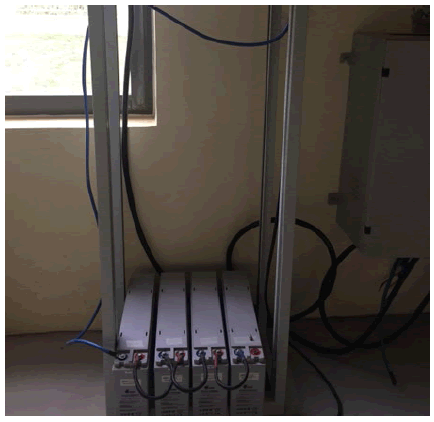
Figure 4: Experiment.
Benefits Of Battery Regeneration
Cost Savings and Return on Investment
Battery regeneration offers significant cost savings for industries that rely on battery-powered equipment. By extending the lifespan of batteries through regeneration, businesses can reduce the frequency of battery replacements, resulting in lower operational costs. Additionally, the upfront investment in battery regeneration equipment and services can yield long-term returns by maximizing the value of existing battery assets.
Extended Battery Lifespan
Battery regeneration helps prolong the lifespan of batteries by addressing common issues such as sulfation, capacity loss, and internal resistance buildup. By restoring the battery's performance and capacity, regeneration allows batteries to function optimally for an extended period. This not only reduces the need for frequent replacements but also minimizes waste generation and the associated environmental impact.
Environmental Impact and Sustainabilit
Battery regeneration contributes to environmental sustainability by minimizing the disposal of used batteries. Instead of discarding batteries prematurely, regeneration allows for their reuse and revitalization. This reduces the demand for raw materials and energy-intensive battery manufacturing processes, leading to a decrease in overall carbon emissions and environmental footprint. By adopting battery regeneration practices, businesses can demonstrate their commitment to environmental responsibility and sustainability.
Operational Efficiency and Reliability
Regenerated batteries exhibit improved performance and reliability compared to degraded batteries. This enhanced performance translates into better operational efficiency and reduced downtime for businesses. In industries where uninterrupted power supply is critical, such as telecommunications and data centers, regenerated batteries provide a reliable backup power source, minimizing service disruptions and ensuring continuous operations. The increased reliability of regenerated batteries also enhances the overall productivity and performance of battery-dependent equipment.
Enhanced Safety
Battery regeneration not only improves battery performance but also enhances safety. By addressing issues such as internal short circuits and acid stratification, regeneration helps mitigate the risk of battery malfunctions, leaks, or failures that can lead to accidents or equipment damage. This is particularly crucial in industries where safety is a top priority, such as aerospace, defense, and medical sectors.
Compliance with Regulatory Requirements
In many industries, regulatory compliance regarding battery disposal and waste management is becoming increasingly stringent. Battery regeneration allows businesses to meet these regulatory requirements by extending the useful life of batteries and minimizing waste generation. By implementing battery regeneration practices, organizations can ensure compliance with environmental regulations while reducing the associated administrative and disposal costs.
Overall, the benefits of battery regeneration encompass cost savings, extended battery lifespan, and reduced environmental impact, improved operational efficiency, enhanced safety, and compliance with regulatory requirements. By embracing battery regeneration technology, businesses can unlock these advantages and achieve sustainable and efficient battery management practices.
Challenges and Future Directions
Technological Advancement
While battery regeneration technology has made significant progress, there are ongoing challenges and opportunities for further advancements. Researchers and engineers are continuously working to improve regeneration processes,develop more efficient equipment, and enhance the overall effectiveness of battery regeneration techniques. Future directions include exploring innovative methods, such as advanced diagnostics and monitoring systems, to optimize the regeneration process and achieve even better results.
Battery Diversity and Compatibility
One of the challenges in battery regeneration is the diverse range of battery chemistries and designs. Different battery types, such as lead-acid, lithium-ion, and nickel-cadmium, requires tailored regeneration approaches. As the battery market continues to evolve with new chemistries and configurations, it is crucial for battery regeneration technologies to adapt and accommodate these variations. Ensuring compatibility and effectiveness across a wide range of battery types remains a key challenge for the industry
Industry Awareness and Adoption
While the benefits of battery regeneration are substantial, there is still a need to raise awareness and promote its adoption across industries. Many businesses may not be fully aware of the potential cost savings, environmental benefits, and improved operational efficiency that battery regeneration can offer. Education and outreach efforts are necessary to inform industry stakeholders about the advantages of regeneration and encourage its widespread adoption as a standard practice in battery management.
Regulatory Landscape
The regulatory landscape surrounding battery regeneration varies across regions and jurisdictions. As governments implement policies and regulations related to battery waste management as shown in Figure 5, it is important for the industry to stay abreast of these developments and ensure compliance. Adapting regeneration processes and practices to align with evolving regulations will be crucial for the long-term success and acceptance of battery regeneration technologies.
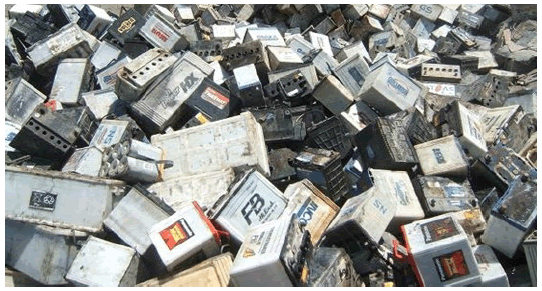
Figure 5: Scrap Batteries.
Scaling and Commercialization
While battery regeneration has been proven effective on a smaller scale, scaling up the technology for large-scale commercial operations pose challenges. Developing efficient and cost-effective regeneration systems that can handle high volumes of batteries is essential for widespread adoption.
Further investments in research, development, and manufacturing capabilities are needed to drive the commercialization of battery regeneration and make it more accessible to businesses across various sectors.
Environmental Concerns
Although battery regeneration helps reduce waste generation and environmental impact compared to traditional battery disposal, there are still concerns regarding the disposal of regeneration byproducts and the overall sustainability of the process. Future directions include exploring ways to optimize the handling and treatment of regeneration byproducts, as well as incorporating renewable energy sources and sustainable practices into the regeneration process itself.
Conclusion
Battery regeneration technology offers a sustainable solution to the global battery waste problem by rejuvenating lead-acid batteries; this technology contributes to environmental conservation, cost savings, and resource efficiency. With its wide-ranging applications and potential for further advancements, battery regeneration is poised to revolutionize the battery industry and promote a greener and more sustainable future. Through the implementation of a safe and environmentally friendly process, technology allows for the regeneration of batteries without the need for extensive dismantling or the addition of harmful chemicals. The results of this study have shown that battery regeneration can effectively restore the capacity and functionality of old and worn-out batteries, reducing the need for battery replacement and minimizing waste generation. The regenerated batteries have exhibited improved performance, increased lifespan, and reduced environmental impact compared to traditional disposal methods.
Moreover, the discussion has highlighted the positive implications of battery regeneration on various aspects. From an environmental perspective, the technology helps in reducing pollution by minimizing the disposal of hazardous battery waste and conserving natural resources. Economically, battery regeneration offers significant cost savings compared to purchasing new batteries, making it an attractive option for businesses and consumers alike.
Looking ahead, future research in battery regeneration technology should focus on improving the efficiency and effectiveness of the regeneration process. Exploring the integration of emerging technologies, such as artificial intelligence and machine learning, could further optimize the regeneration process and enhance overall performance.
Additionally, addressing the challenges related to the collection and accessibility of used batteries, as well as promoting awareness and support from governmental bodies, will be crucial for the widespread adoption of battery regeneration.
In summary, the findings of this research support the viability and potential of battery regeneration technology as a sustainable solution for extending the lifespan and reducing the environmental impact of batteries. By embracing this technology, industries and individuals can contribute to a greener and more sustainable future while benefiting from cost savings and improved battery performance. Further research and development in this field will undoubtedly unlock new opportunities and advancements in battery regeneration technology.
Acknowledgements
• The authors would like to express their sincere gratitude to the individuals and organizations that have contributed to the successful completion of this research on battery regeneration technology.
• We would like to thank our research team for their dedication and hard work in conducting experiments, analyzing data, and providing valuable insights throughout the study. Their expertise and commitment have been instrumental in achieving the research objectives.
• We would also like to extend our appreciation to the participants who willingly participated in this study and provided valuable feedback. Their involvement has greatly enriched the research findings and contributed to its overall validity and reliability.
• Furthermore, we are grateful to the funding agencies and institutions that have provided financial support for this research. Their support has enabled us to acquire the necessary resources and equipment to carry out the experiments and analysis.
• Lastly, we would like to express our gratitude to the academic community and industry experts who have shared their knowledge and expertise in the field of battery regeneration technology. Their contributions through discussions, collaborations, and publications have greatly influenced the direction and scope of this research.
• Without the support and contributions of the aforementioned individuals and organizations, this research would not have been possible. We are truly grateful for their assistance and collaboration, and we acknowledge their invaluable contributions to the advancement of battery regeneration technology.
Declaration of Competing Interest
The authors declare that they have no known competing financial interests or personal relationships that could have appeared to influence the work reported in this paper.
References
- Smith, K. A. "Electrochemical control of lithium-ion batteries [applications of control]." IEEE Control Syst Mag. 30.2 (2010): 18-25.
- Amanor-Boadu, J. M., and Anthony G. E. "Improved performance of li-ion polymer batteries through improved pulse charging algorithm." Appl Sci. 10.3 (2020): 895.
- Wang, L., et al. "Research progress of the electrochemical impedance technique applied to the high-capacity lithium-ion battery." Int J Miner Metall Mater. 28 (2021): 538-552.
- Lander, L., et al. "Cost and carbon footprint reduction of electric vehicle lithium-ion batteries through efficient thermal management." Appl. Energy. 289 (2021): 116737.
- Bobkov, Y. V., et al. "Altered functional properties of the codling moth Orco mutagenized in the intracellular loop-3." Sci Rep. 11.1 (2021): 1-16.
- Roy, J. J., et al. "Green recycling methods to treat lithium‐ion batteries E‐waste: a circular approach to sustainability." Adv Mater. 34.25 (2022): 2103346.
- Lai, Y. Y., et al. "Polymeric active materials for redox flow battery application." ACS Appl Polym Mater. 2.2 (2020): 113-128.
- Jamratnaw, W. "Desulfation of lead-acid battery by high frequency pulse." IEEE. 2017.